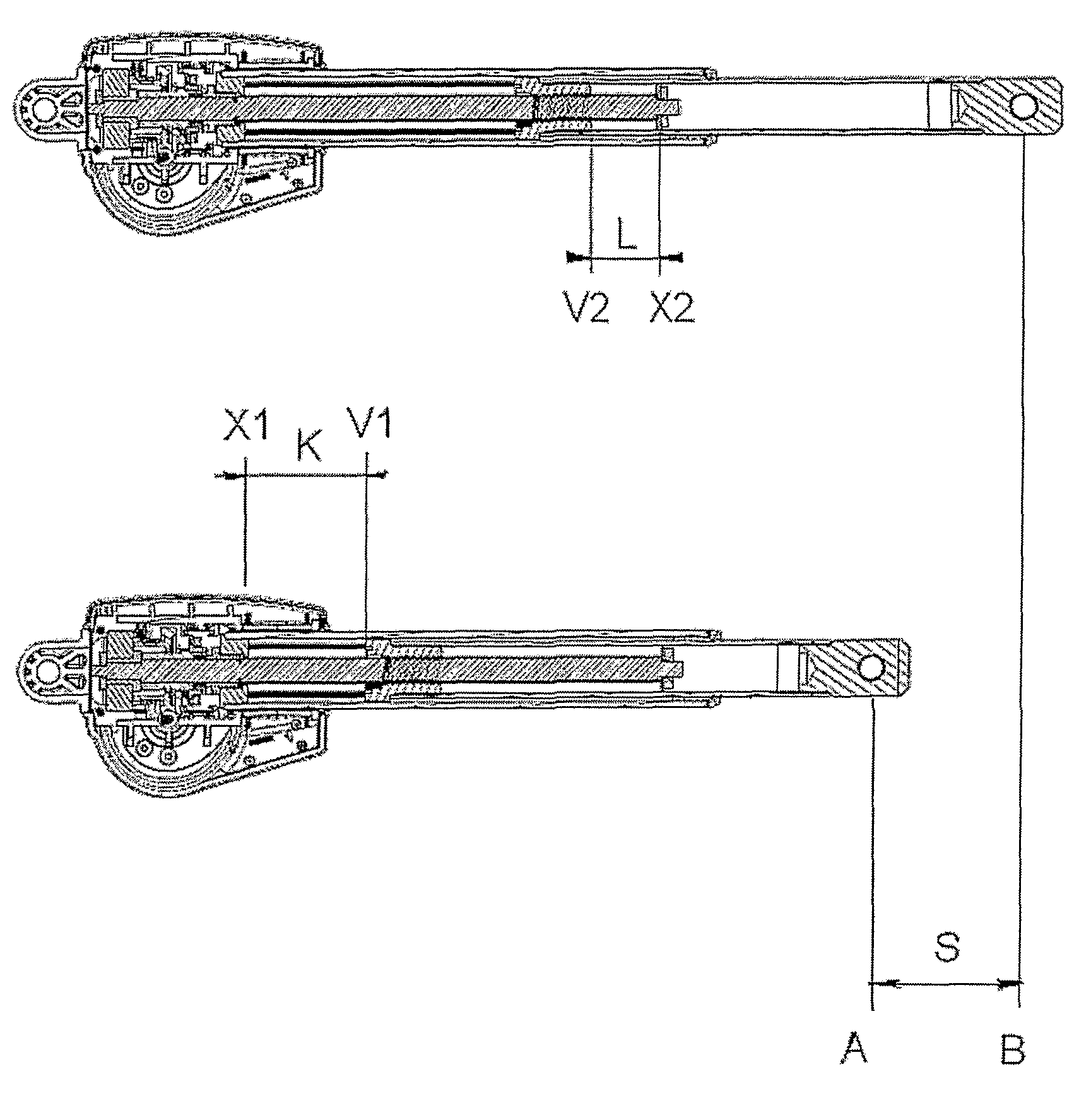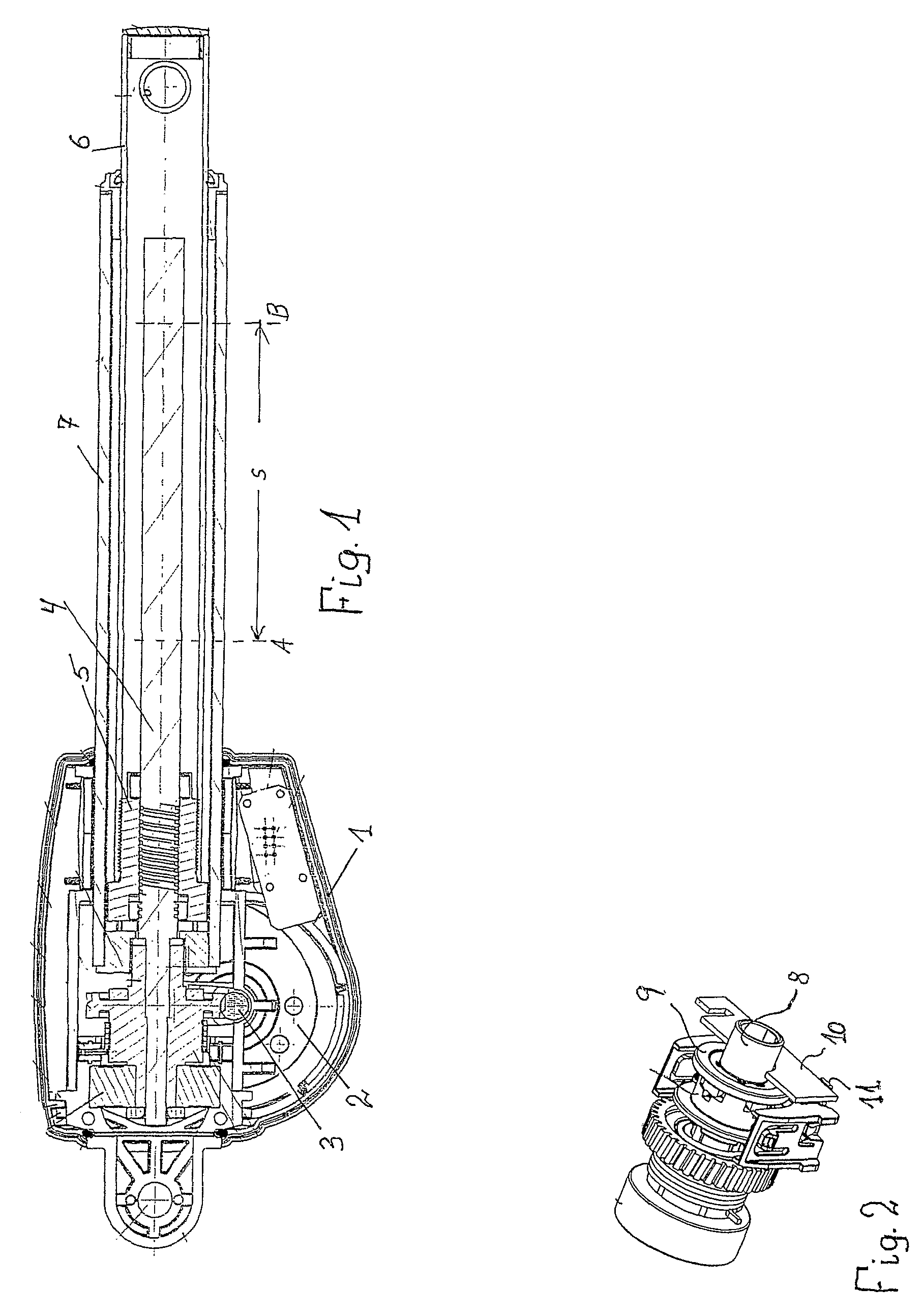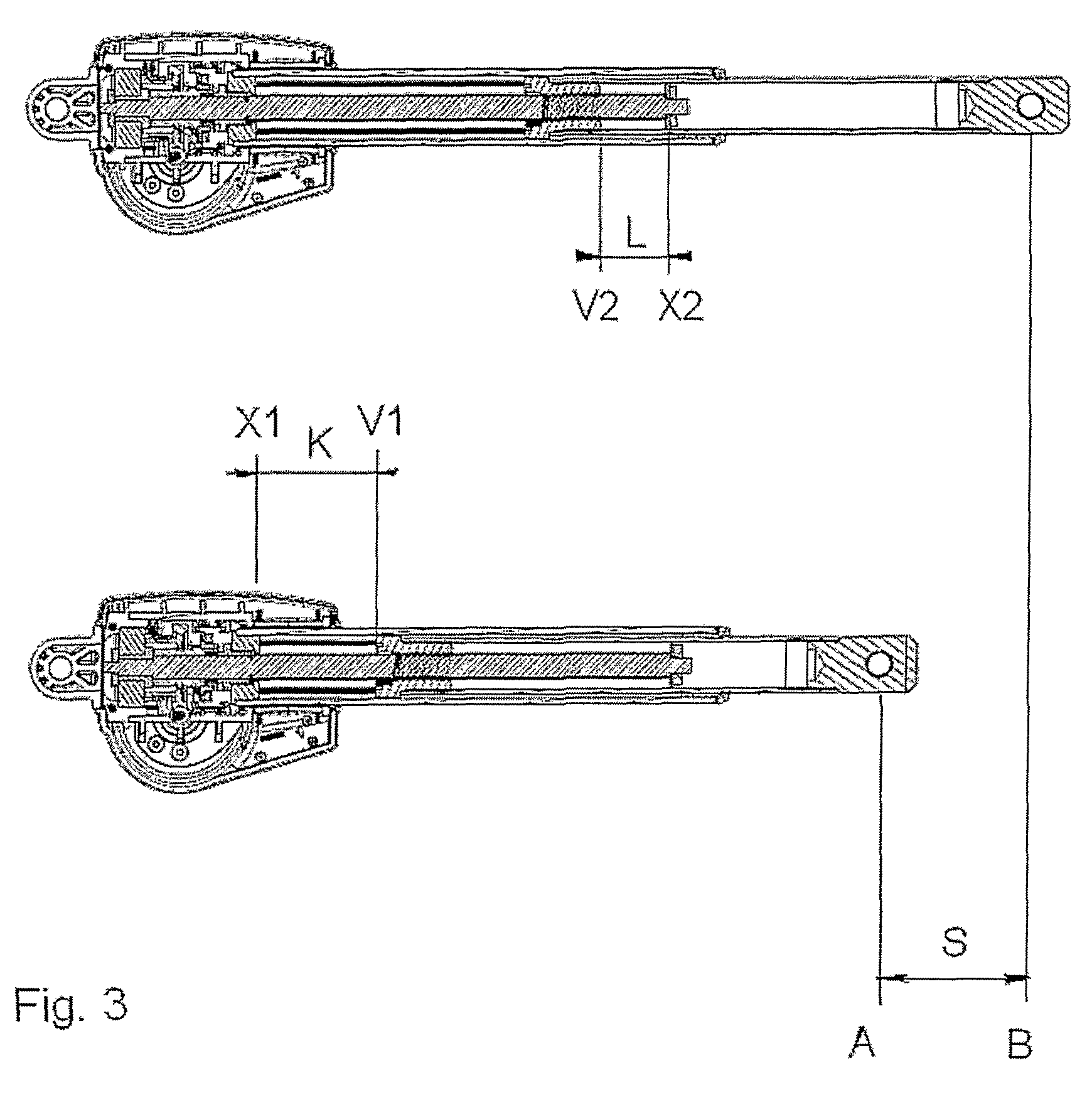Linear actuator
a technology of linear actuators and actuators, applied in mechanical control devices, dynamo-electric machines, limiting/preventing/returning movement of parts, etc., can solve problems such as counting errors, and achieve the effect of simple and compatible length and simple definition of stroke length
- Summary
- Abstract
- Description
- Claims
- Application Information
AI Technical Summary
Benefits of technology
Problems solved by technology
Method used
Image
Examples
Embodiment Construction
[0028]As it appears from FIG. 1 of the drawings, the main components of the actuator consist of a housing 1, in two parts, with a reversible DC-motor 2, which over a worm drive 3 drives a spindle 4 with a spindle nut 5, to which a tubular activation rod 6 (inner tube) surrounded by an outer tube 7 is secured. The base construction of the actuator is incidentally of the type stated in WO 02 / 29284 and reference to it is incidentally made.
[0029]As can be seen from FIG. 2, a couplings part 8 of the worm wheel is equipped with a magnetic frame yoke 9 with four poles, for determination of the position of the activation rod 6. In this connection two Hall sensors 11, of which only one is visible while the other is hidden under the couplings part 8, are mounted on a small print 10. By rotation of the magnetic frame yoke the Hall sensors are activated when a pole passes by these, and a signal is in that way discharged to a control unit, which via a micro processor calculates the position of t...
PUM
 Login to View More
Login to View More Abstract
Description
Claims
Application Information
 Login to View More
Login to View More - R&D
- Intellectual Property
- Life Sciences
- Materials
- Tech Scout
- Unparalleled Data Quality
- Higher Quality Content
- 60% Fewer Hallucinations
Browse by: Latest US Patents, China's latest patents, Technical Efficacy Thesaurus, Application Domain, Technology Topic, Popular Technical Reports.
© 2025 PatSnap. All rights reserved.Legal|Privacy policy|Modern Slavery Act Transparency Statement|Sitemap|About US| Contact US: help@patsnap.com



